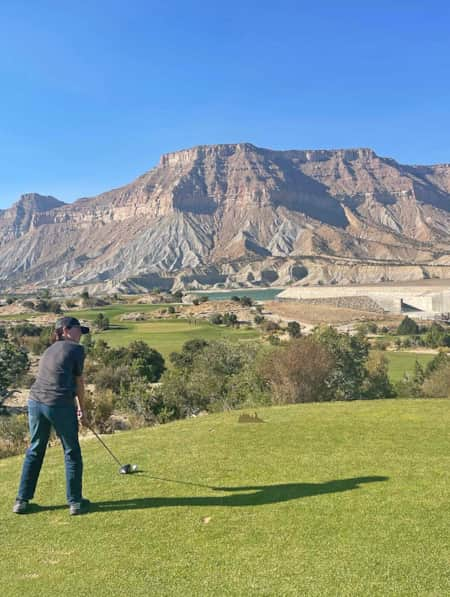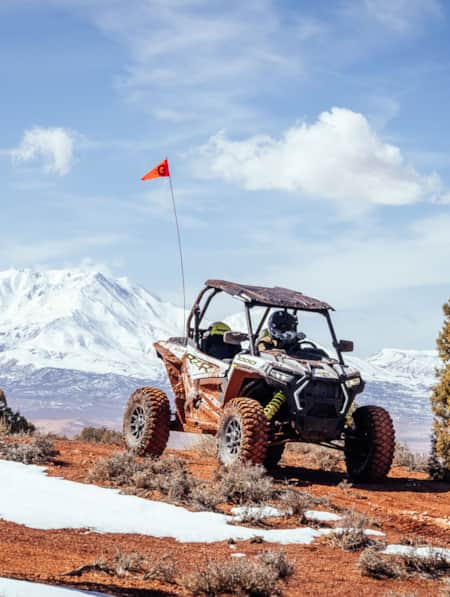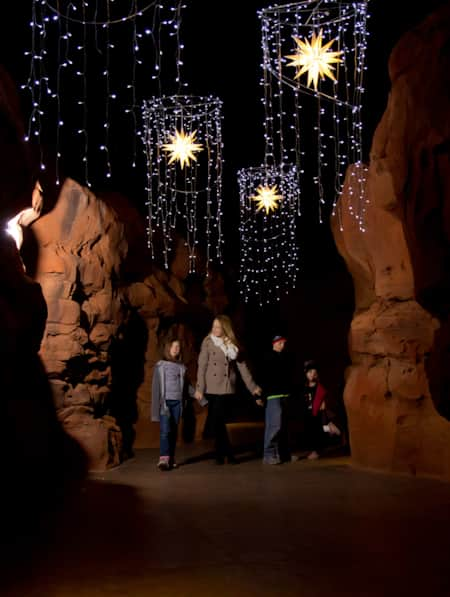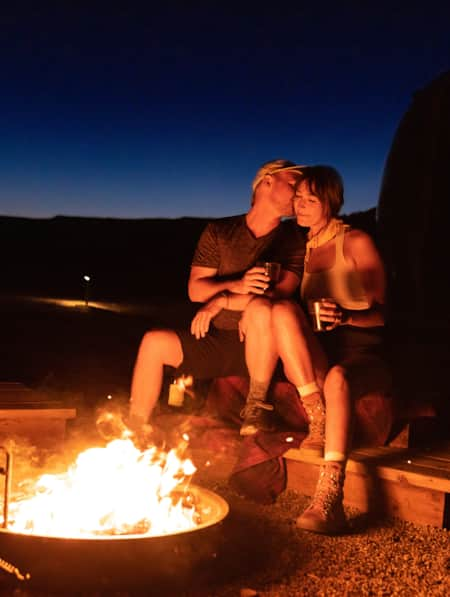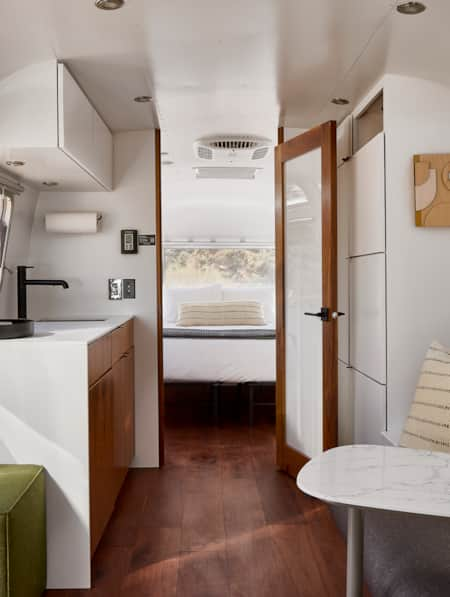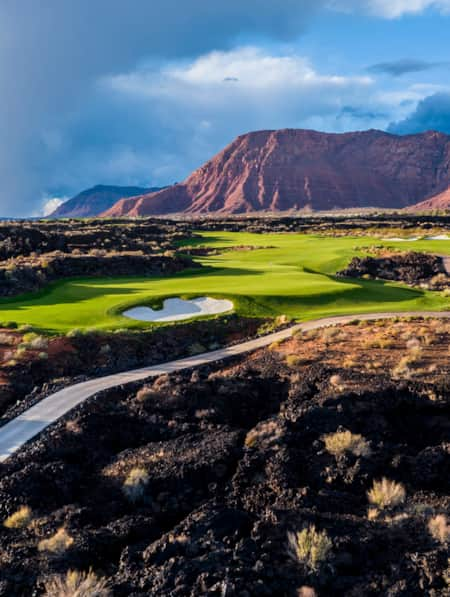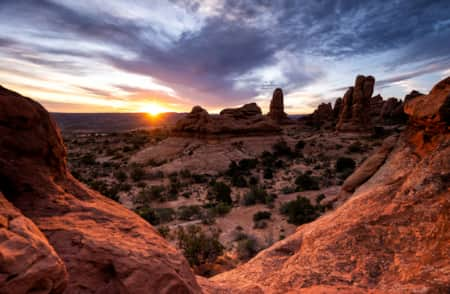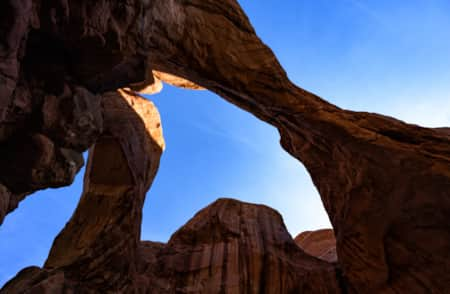Winter Weather in Arches
Even though Arches is in Southern Utah, winter temperatures can be quite cold. Typical daytime highs average between 30 to 50 degrees Fahrenheit, with lows averaging 0 to 20 degrees Fahrenheit. Snow and ice do occur, but large amounts of snow are fairly rare. However, any amount of snow or ice can make trails and roads difficult or impassable. Temperatures can fluctuate quite a bit within a single day, so dressing in layers will be helpful.
Average Daily High and Low Temperature
Oct. |
Nov. |
Dec. |
Jan. |
Feb. |
|
74/42 F |
56/30 F 13/-1 C |
45/23 F 7/-5 C |
44/22 F 6/-5 C |
52/28 F 11/-2 C |
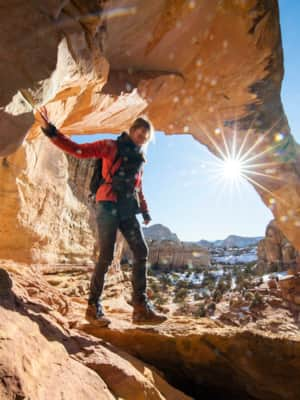
How To Visit Southern Utah in Winter
Southern Utah in the winter offers many possibilities, from hiking and camping to skiing and snowshoeing. Learn how to prepare yourself for a winter adventure.
Winter Activities in Arches
-

Scenic Drive
You don’t even have to leave your car to soak in the stunning red rock scenery. Explore Arches National Park by embarking on a scenic drive. Be sure to prepare for winter driving conditions, have snow tires or chains, and check the weather forecast and road conditions before heading out. The Windows Section of the park features enormous arches and the Delicate Arch Viewpoint showcases the park’s most famous arch. Parking lots can fill and traffic can be a challenge during peak visitation times, so check for slower times to visit.
-

Stargazing
Short winter days make for long winter nights perfect for stargazing — just make sure you bundle up. As an International Dark Sky Park, Arches has some of the darkest skies and best stargazing in the world. The further away from Moab you venture, the darker the night sky will be. A new moon will produce the darkest skies and best views, as long as it is clear. Panorama Point and Balanced Rock Picnic Area are often good places to stargaze. Be sure to use a red light (many headlamps and flashlights have a red light setting) to preserve your night vision and move around carefully.
-

Winter Hikes
Soak up Southern Utah’s most scenic panoramas with a winter hiking adventure in Arches National Park. Most of the park’s hiking trails are open all year, but be aware trails can become quite slippery when icy or snowy. Start with a relatively easy trail like the Nature Trail behind the visitor center and consider other hikes like Balanced Rock, The Windows, or Double Arch. Wear sturdy boots and consider traction devices for your shoes along with trekking poles. Also keep in mind that trails — even very popular and relatively easy ones — can become hard to follow when snow is obscuring the path, so use extra caution and check conditions before setting out.
-

Winter Photography
Stunning red rock arches lightly frosted with snow make perfect subjects for a winter photography outing. Spend some time snapping images in the park while practicing mindful photography. Use the soft winter light, combined with the sunset and sunrise “golden hours,” to snap some incredible shots. In the morning, capture early light at Double Arch, Landscape Arch, The Three Gossips, Cache Valley and Moab Fault. Late afternoon is prime time for Tower Arch, Petrified Dunes and plenty of other locations.
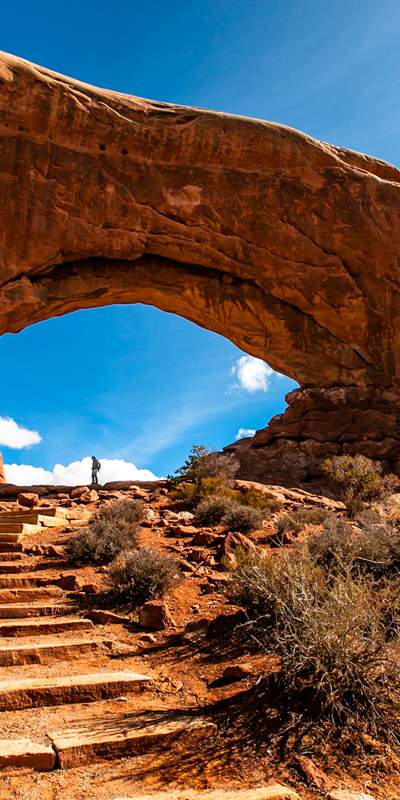
Winter Camping Near Arches
Devils Garden Campground is first-come, first-served from November through February, and reservable during the rest of the year. The campground is 18 miles from the park entrance and individual sites cost $25 per night. Campers should be prepared for below freezing temperatures and have all the equipment, supplies, skills and knowledge they need for a safe and fun winter camping trip. No RV hookups are available. A number of campgrounds are also available outside the park, as well as other lodging options like hotels, motels, lodges, bed and breakfasts, resorts and boutique properties in Moab and beyond.
Winter Travel Tips
A winter visit to Arches National Park is rewarding, but you have to plan ahead to ensure a safe and successful trip.
- The park is open year-round, and the visitors center is open most days, though hours vary.
- Check the park website or call to get the most up-to-date information on current conditions. Areas and roads can be closed or restricted with little notice, and some areas can become hazardous in certain weather conditions. Roads, parking lots, pullouts, trails and other areas can be icy, even well after a storm, so always use caution.
- Practice good stewardship and don’t touch or climb on the arches, mark any rocks, or step on biological soil crusts or ephemeral pools.
- The park encourages visitors to carefully plan their trip and leave a trip plan with an emergency contact.
- Be flexible with your plans. Check the forecast the day of the trip and be prepared to switch to Plan B (which could be staying indoors) depending on conditions.
- Always bring appropriate winter gear, including plenty of warm clothes for layering along with extras in case your clothes get wet, as well as sunglasses and sunscreen. Be sure to properly prepare for a winter visit.
- Make sure you are prepared for winter driving — mind the weather and know when your car might not be adequate for winter storm conditions.
Start Planning
-

Arches National Park
Arches National Park contains more than 2,000 natural arches—the greatest concentration in the country. Find places to stay, itineraries, reservation info and weather for Arches, Moab and Canyonlands National Park.
-

Arches National Park Camping
An otherworldly landscape of stunning red sandstone provides the perfect backdrop for a camping adventure.
-

Arches National Park Hikes
Arches National Park is one of the most popular hiking destinations in Southern Utah. Start planning your hiking trip with these trails!
-

How to Visit Arches
Arches National Park is a red rock paradise — and also a very popular destination. Discover tips for how to visit responsibly and maximize your enjoyment.
-

Things To Do In Arches National Park
Arches National Park is a vast playground for the adventurous, where everyone can find an unforgettable experience.







